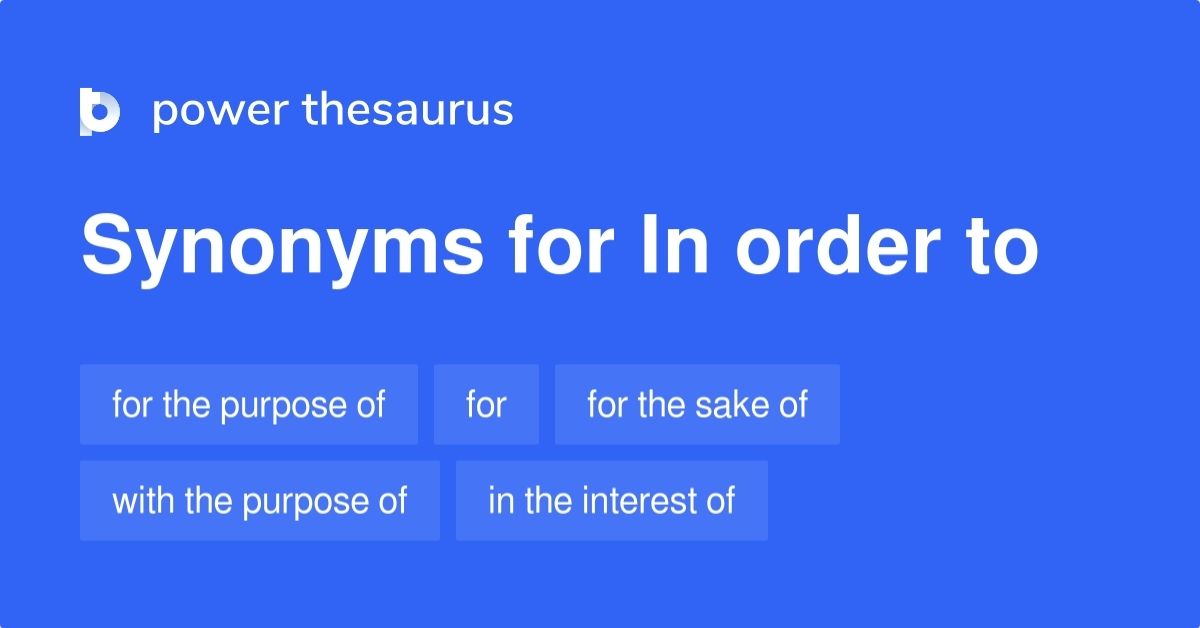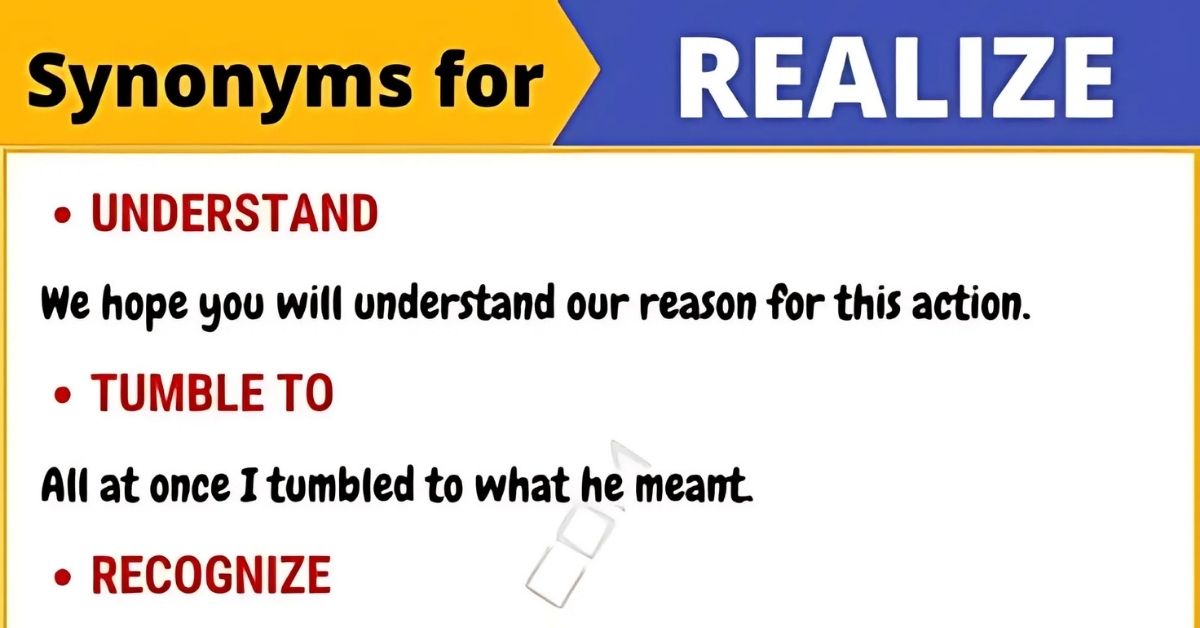Looking to improve your writing by avoiding repetitive phrases? Swapping out common expressions with smarter alternatives can make a big difference. The phrase “in order to” often appears in both formal and informal writing, but it
can sound wordy or overly formal. That’s where these 12 Other Ways to Say In Order To come in handy. Whether you’re writing emails, essays, or professional documents, using varied phrases can add clarity, precision, and natural flow to your work. This guide explores practical and effective substitutes for clearer, more engaging communication.
12 Other Ways to Say Bio
| Alternative Phrase | Tone | Common Usage | Example Sentence |
| To | Casual, Clear | Everyday, All contexts | She studies hard to pass the exam. |
| For the Purpose of | Formal | Legal, Academic, Business | This report is written for the purpose of analysis. |
| With the Aim of | Semi-formal | Business, Goal-setting | He enrolled with the aim of becoming a pilot. |
| With the Intention of | Neutral | Personal goals, Planning | They moved with the intention of starting over. |
| So as to | Formal, Dated | Academic, Government Writing | Laws were amended so as to improve fairness. |
| So That | Conversational | Cause-effect Explanation | He trained daily so that he could win the race. |
| With a View to | Formal | Strategic, Future Planning | She invested with a view to long-term gains. |
| For the Sake of | Emotional | Personal, Moral Contexts | He quit smoking for the sake of his children. |
| With the Goal of | Clear, Business | Business, Career, Self-help | She worked weekends with the goal of launching a brand. |
| With the Objective of | Corporate | Reports, Academic | The training was held with the objective of upskilling staff. |
| Towards | Motivational | Progress, Self-growth | He’s saving money towards his dream house. |
| As a Means to | Strategic | Academic, Technical Writing | She used surveys as a means to gather data. |
For the Purpose of

For the purpose of is a great phrase when you’re trying to be clear and professional. It’s often used in formal writing, like legal documents, company reports, or academic essays. It tells the reader that you’re doing something for a specific reason or objective. This phrase fits well in structured or strategic language. For example: “This report was written for the purpose of evaluating our sales strategy.” The phrase shows intention and clarity without sounding too complex.
In professional or legal environments, people use “for the purpose of” when they want to explain why something is happening in a serious tone. It’s part of the formal register, used to show function or goal. Whether you’re submitting a proposal or writing a policy document, this phrase makes your intent clear. It’s a great example of persuasive, structured phrasing. It’s one of the best formal replacements.
also reaide: 12 Other Ways to Say “Hard Worker”
With the Aim of
The phrase with the aim of is useful when you’re describing a plan or goal. It fits both business and academic writing and gives your sentence a polished tone. You might say, “She enrolled in college with the aim of becoming a doctor.” This shows purpose with a touch of future thinking. It’s perfect for showing planned or strategic action in writing.
This phrase also sounds less stiff than “in order to” but still keeps a serious tone. It works well when you want to sound targeted, professional, or clear. Think of it as a strong tool in your writing toolbox, one that balances style and clarity. It’s used often in resumes, company missions, or structured writing, where audience, function, and goal all matter. The tone here is persuasive, ideal for reaching a strategic or planned outcome.
With the Intention of
Using with the intention of adding a bit more personality to your sentence. It shows that someone made a conscious decision to do something. For example: “He moved to New York with the intention of starting a new life.” This phrase carries a thoughtful or emotional tone, especially when the reason behind an action is personal or meaningful.
You’ll often hear this in both casual conversation and written storytelling. It works in blogs, social posts, speeches, or even motivational content. While still sounding formal, it gives off a more human vibe than some of the colder alternatives. It’s also part of the language style that focuses on intention, tone, and audience, making your writing sound more connected and expressive.
To
To is by far the most concise, everyday, and common way to replace “in order to.” It’s short, natural, and perfect for almost every situation. Instead of saying, “She studied hard in order to pass the exam,” just say, “She studied hard to pass the exam.” It sounds more fluent and direct. In fact, this is the version most native speakers choose in daily speech and writing.
It’s ideal for spoken communication, email, blog writing, or even casual posts. You’ll see it everywhere in texts, signs, ads, and conversations. According to, to is not only the shortest but the most effective replacement. It suits all styles and is a great example of simple, informal, and effective use of English. Whether you’re on a deadline or just trying to sound clear, it always works.
So as to

The phrase so as to might sound a little formal or even outdated, but it still has a place in written English. It’s more common in government papers, academic articles, or technical documentation. It adds a touch of old-school formality. For instance, “They reduced the budget so as to cut costs.” The meaning is the same as “to,” but it sounds more polished in official settings.
It’s still used in modern writing, especially when formality matters. Think of it as part of your formal writing toolbox when you need something more refined than “to.” It belongs to the structured, technical, and legal writing styles where exact tone and phrasing are important. You’ll find it in documents from bachelorprint, research papers, or legal files, making it one of the more advanced, official, and structured options.
So That
So that introduces a cause-effect relationship. It’s used when you want to explain why something was done and what the result should be. For example: “He saved money so that he could buy a car.” This construction is super common in American English, especially in spoken and written contexts. It’s friendly, useful, and full of clarity.
You’ll find this phrase in everything from instruction manuals to friendly chats. It’s flexible, easy to use, and sounds natural. It also helps explain intentions while connecting ideas smoothly. It’s not just about purpose, it’s also about outcomes, making it a great choice for idiomatic, contextual, or cause-effect writing. The phrase belongs to the conversational register, ideal when you’re speaking or writing to inform someone clearly and logically.
With a View to
With a view to is more common in formal American business writing. It’s often used in settings where long-term thinking or planning is involved. For example: “The company expanded its services with a view to increasing market share.” It communicates clear strategy and forward-looking decisions.
While it’s not used in casual speech, this phrase adds a professional tone in documents, planning reports, and goal-setting discussions. It gives a sense of intellectual, strategic, and advanced writing style. It’s especially strong in environments where planning, forecasting, and decision-making are involved. It’s a good example of how tone and intent are shaped by word choice.
For the Sake of
When you hear for the sake of, it usually adds emotion, values, or sacrifice to the sentence. It’s perfect when you’re talking about doing something important, even if it’s not easy. For example: “She stayed strong for the sake of her children.” This phrase is popular in American culture, especially in discussions around family, health, and personal responsibility.
It’s used in both spoken and written contexts, from movies to everyday talk. It can sound emotional, persuasive, or even poetic. This makes it a very expressive, idiomatic, and contextual alternative. It adds deeper meaning to your message and helps connect with the reader or listener on a human level. It fits naturally into casual, literary, and narrative content styles.
With the Goal of
With the goal of fitting perfectly in resumes, business plans, and career goals. It’s a phrase that adds structure to your purpose. For instance, “She launched the campaign with the goal of raising awareness.” It’s clear, focused, and practical especially for strategic writing.
In American professional settings, you’ll see this used in performance reviews, leadership training, or entrepreneurial stories. It balances clarity with purpose and tells your reader that there’s a specific target in mind. It’s part of goal-oriented, formal, and business language that gets straight to the point.
With the Objective of
This one is even more formal than “with the goal of.” It’s common in corporate documents, technical writing, or academic articles. For example: “This training was developed with the objective of improving customer service.” It gives a very focused and business-like tone, often linked to measurable outcomes.
Because it sounds precise and official, it’s great for structured content, like research papers or proposals. It fits well in the formal register and is often used in serious communication where style, usage, and structure are closely watched. If you want to sound professional, this is one of the top options.
Towards
It is simple but powerful. It shows direction or progress rather than immediate goals. For example: “He’s working towards his degree.” It doesn’t just explain purpose, it shows motion or growth over time. That makes it a great choice in American writing when talking about effort or gradual change.
It’s a flexible word that works in many different situations from self-help blogs to corporate newsletters. It’s less formal than many of the other phrases, but still meaningful. It’s also highly versatile, making it perfect for both casual and professional communication. Its strength lies in its simplicity.
As a Means to
As a means to sound smart without trying too hard. It’s used to explain a method or strategy. You might say, “He took extra classes as a means to boost his GPA.” It fits well in persuasive writing or in any sentence where you want to show how something is being done.
This phrase is great for essays, research, and analysis. It belongs to the academic, method-based, and logical side of writing. It helps your writing sound smart and intentional, while still staying clear. It’s often found in NLP-related writing, technical articles, and professional communications where precision matters.
Final Thoughts on Using These Alternatives to “In Order To”
Choosing the right way to say “in order to” isn’t just about grammar. It’s about tone, style, clarity, and how your message feels to the reader. Whether you’re aiming for succinct, casual, or formal communication, using these alternatives helps make your writing sound more natural and engaging. Use short options like to when speed matters, or go with the goal of when formality and strategy count.
Don’t forget writing is about connection. The more you vary your phrasing, the stronger your message. So whether you’re writing an email, a research paper, or a blog post, try mixing these phrases in. You’ll find that your writing becomes not only clearer—but also more human.
Conclusion
Mastering these 12 other ways to say in order to instantly elevate your writing and communication. Whether you’re drafting a resume, writing an essay, or sending a quick email, the right phrase can make your message clearer and
more engaging. From casual to formal, each alternative offers its own unique tone and purpose. Choosing wisely helps you sound more fluent, professional, and confident. So next time you’re tempted to use “in order to,” try a smarter, simpler option from this list and make every word count.

Grammerroot is your trusted source for mastering English grammar and language skills. From simple rules to advanced tips, we help learners build strong foundations through easy-to-understand content. Learn smart, learn right — only at Grammer Root.




